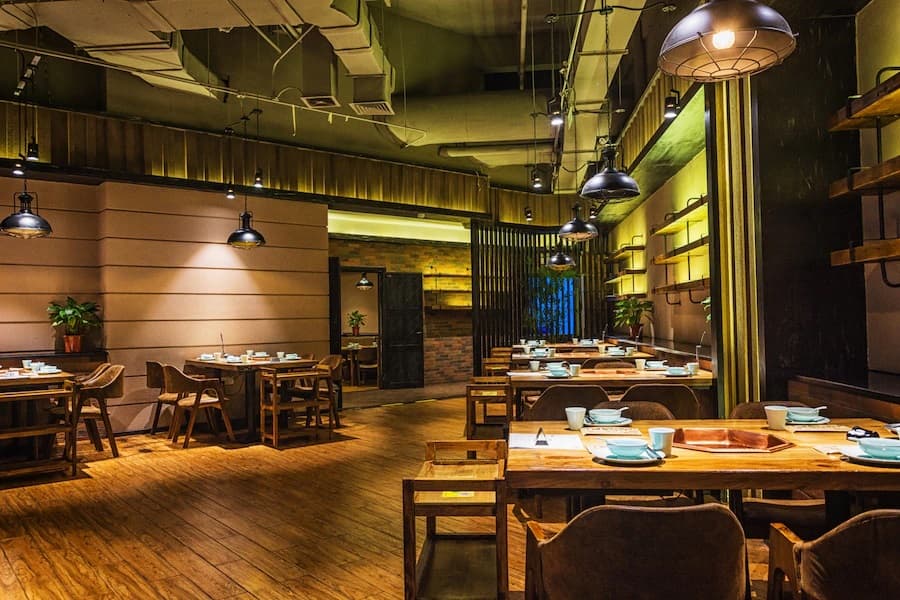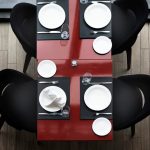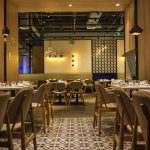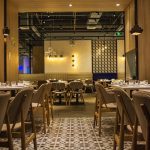When opening or renovating a restaurant, one of the most important decisions is how to choose furniture for your restaurant. The right furniture impacts not only the aesthetic appeal but also the comfort of guests, operational efficiency, and overall dining experience. Poorly chosen furniture can lead to customer discomfort, inefficient use of space, and even increased maintenance costs.
A well-thought-out furniture selection will help maximize space, create a cohesive theme, and improve the flow of service. In this guide, we’ll cover the key considerations for choosing restaurant furniture that is stylish, functional, and durable, ensuring that your business thrives.
Table of Contents
Toggle- Key Considerations When Choosing Restaurant Furniture
- Enhancing Restaurant Aesthetics with Stylish Furniture
- Outdoor Seating Considerations for Restaurants
- Final Thoughts on How to Choose Furniture for Your Restaurant
- Restaurant Furniture Layout
- 4 Tips for Furnishing your Restaurant
- How to Furnish a Restaurant
- What is the role of color in restaurant interior design?
- Most popular wood types for restaurant furniture
- How to choose the right tabletop material
- Psychology of Restaurant Designs
- How to Choose Timeless Furniture for your Hotel
- Turkish Restaurant Furniture Options
- Restaurant Furniture Istanbul
- Restaurant Bar Chair Ideas from Turkey
- Metal or Plastic Chair for your Restaurant in Turkey
- Restaurant Chair Produced in Turkey for Indoor and Outdoor
- Selecting Restaurant Tables Made in Turkey
- Designing Restaurant Booth Seating From Turkey
- 7 Things to Consider Whilst Designing a Restaurant Furniture Layout
- The Guide to Planning and Buying Restaurant Tables and Chairs Made in Turkey
- Advantage of Booth Seating Made in Turkey
- What type of restaurant chair should you prefer – wooden, metal, or plastic?
- Building A Unique Atmosphere
Key Considerations When Choosing Restaurant Furniture
1. Define Your Restaurant’s Style and Theme
Before selecting furniture, you must first define your restaurant’s concept and theme. The type of seating, tables, and overall design should align with your brand identity and target audience.
Fine Dining Restaurants – Require elegant, upholstered seating and high-quality wooden tables for a luxurious feel.
Casual Dining Establishments – Work best with a mix of booths, wood, and metal chairs, balancing comfort and style.
Fast-Food and Quick-Service – Need lightweight, stackable, and easy-to-clean furniture for fast turnover.
Cafés and Bistros – Benefit from a mix of intimate two-person tables and communal seating.
Tip: The furniture should reflect your restaurant’s personality while ensuring customer comfort.
2. Select Comfortable and Durable Seating Options
Seating is one of the most important elements when selecting restaurant furniture. Guests should feel comfortable, especially if they plan to stay for an extended period.
Wooden chairs – Classic and durable, perfect for casual and fine dining settings.
Metal chairs – Ideal for industrial-style and modern restaurant interiors.
Upholstered chairs and booths – Enhance comfort but require stain-resistant fabrics for easy cleaning.
Stackable or foldable chairs – Great for flexible layouts or multi-use spaces.
Tip: Always opt for commercial-grade restaurant chairs, as they are designed for heavy usage and last longer than residential furniture.
3. Choosing the Right Tables for Your Restaurant
Tables play a major role in defining the dining experience. They should be durable, easy to clean, and proportionate to the seating space.
Round tables – Encourage conversation and are great for social dining experiences.
Square and rectangular tables – Provide flexibility for different group sizes.
High-top tables – Ideal for bars and fast-casual restaurants.
Communal tables – Foster interaction in trendy cafés and modern restaurants.
Tip: Consider scratch-resistant and spill-proof surfaces for long-lasting durability.
4. Space Optimization and Restaurant Layout Planning
A functional restaurant layout ensures that both guests and staff can move comfortably. Poorly arranged furniture can lead to bottlenecks, slow service, and uncomfortable dining experiences.
Allow at least 24–30 inches between tables for guest comfort.
Provide at least 36 inches of walkway space for staff movement.
Use modular furniture arrangements to easily adjust seating for large groups.
Tip: Consider using booth seating along walls to maximize space without making the restaurant feel overcrowded.
Enhancing Restaurant Aesthetics with Stylish Furniture
1. Coordinating Colors and Materials
Wood finishes offer warmth and complement a rustic or classic theme.
Metal and glass combinations create a modern, industrial look.
Bright and vibrant furniture adds character to fast-casual eateries.
Tip: Stick to neutral tones for a timeless design while incorporating accent colors through decor elements.
2. Importance of Lighting in Restaurant Furnishing
Lighting plays a crucial role in setting the mood and enhancing furniture aesthetics.
Warm lighting enhances the atmosphere in fine dining settings.
Cooler, brighter lights are suitable for cafés and quick-service restaurants.
Pendant lights over tables create a focal point while adding elegance.
Tip: Use adjustable lighting to switch between daytime and evening dining experiences.
Outdoor Seating Considerations for Restaurants
If your restaurant has an outdoor dining space, selecting weather-resistant furniture is essential.
Aluminum and resin furniture withstands humidity and temperature changes.
Teak wood tables and chairs offer natural beauty with durability.
Umbrellas and retractable canopies provide shade and protection from the elements.
Tip: Arrange outdoor furniture in a way that encourages comfortable seating while maximizing available space.
Final Thoughts on How to Choose Furniture for Your Restaurant
Choosing the right restaurant furniture requires a balance between aesthetics, functionality, and durability. Investing in high-quality seating, well-planned layouts, and stylish tables can enhance both the customer experience and the restaurant’s overall appeal.
Key Takeaways:
Select furniture that aligns with your restaurant’s theme and brand identity.
Prioritize customer comfort with ergonomic and durable seating.
Optimize space by arranging furniture strategically to improve flow.
Choose tables that fit your dining concept and maximize usability.
Enhance ambiance with coordinated colors, materials, and lighting.
Consider outdoor seating options with weather-resistant materials.
By carefully planning how to choose furniture for your restaurant, you can create a welcoming and efficient dining space that attracts and retains customers.



